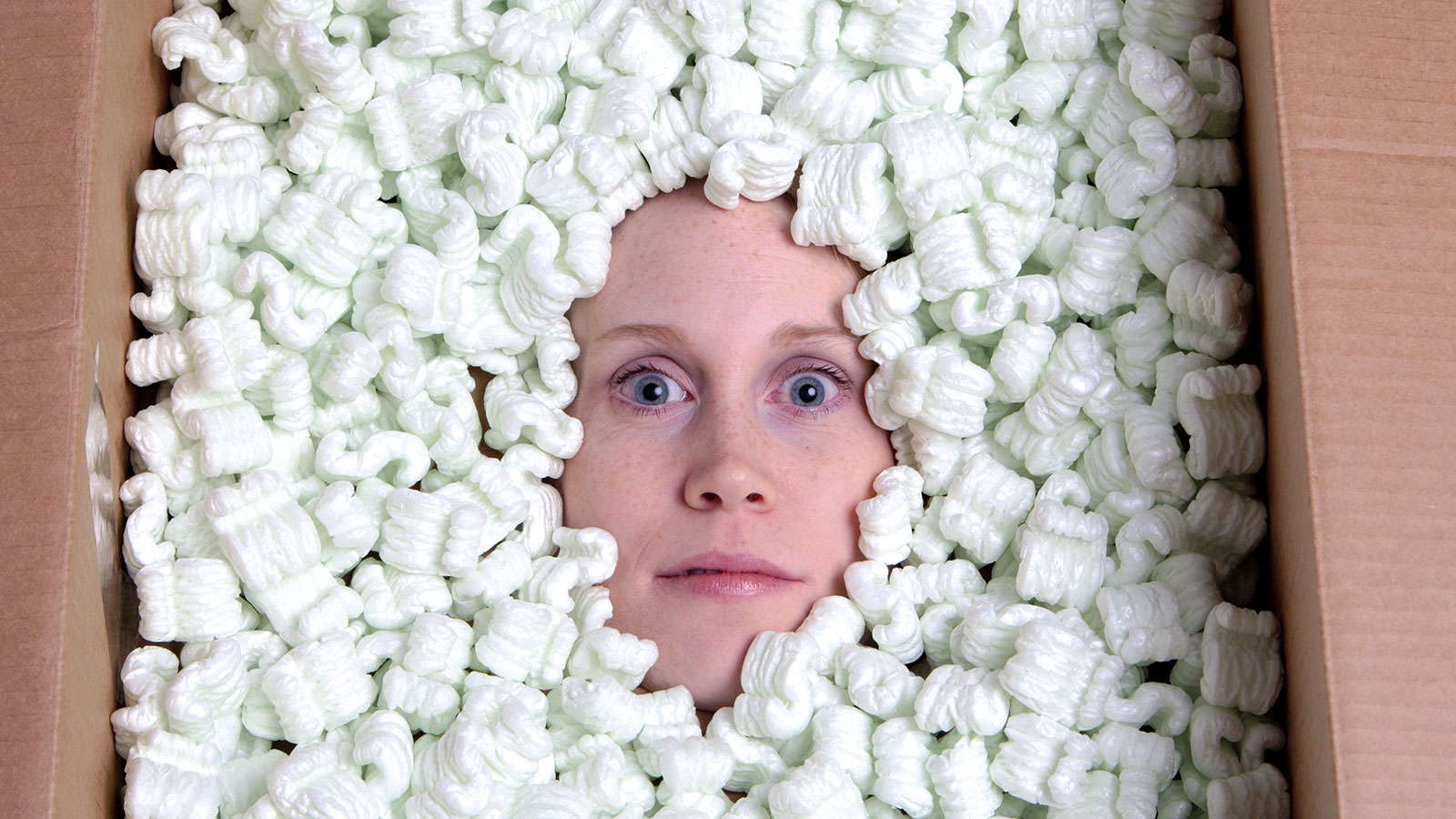Send your question to Umbra!
Q. I am distressed by the bulky #6 Styrofoam blocks that come in the box on the rare occasion when I buy something new and large. I have not found anywhere that recycles them; they sit around the house for a few months, and if Halloween doesn’t arrive, they ultimately go in the trash. (I’ve already dressed as a salted pretzel, hot cocoa with marshmallows, and coffee with sugar cubes for Halloween.)
I found your post from 2004 that said the market for #6 might improve, but it’s been ten years (!) and it doesn’t seem like it has. Is there hope for #6? Do you have any other ideas of how to dispose of it?
Emily B.
Hillsborough, N.C.
A. Dearest Emily,
How about bagel with sesame seeds? Christmas tree covered in snow? Starry sky? That should get you through another few years.
But seriously now: I’m afraid those piles of excess foam still represent a recycling hurdle in many parts of the country. And even the most inspired Halloween reuse is merely delaying the disposal issue, leaving us with a big, bulky problem. But the good news is that you can very likely find a place to recycle your blocks, even if it’s not as simple as taking them out to the curb.
First, a note on semantics: What you call Styrofoam, Emily, is technically expanded polystyrene, or EPS. We encounter the stuff frequently as packing material (both blocks and peanuts), takeout food containers, egg cartons, and disposable cups. Styrofoam, on the other hand, is a trademarked product from the Dow Chemical Company. These materials are similar and frequently confused, but this is not exactly a Kleenex/tissue situation.
Many municipal recycling companies like yours don’t accept EPS, citing its difficulty to keep clean and uncontaminated (especially takeout containers), lack of nearby processing facilities, and shipping inefficiency (imagine the trucks needed to haul such a large, lightweight commodity; EPS can be as much as 98 percent air). But if you can reasonably get your blocks to a densifier – a machine that converts airy chunks of #6 into compact, shipping-friendly bricks – there’s indeed a market for them. Recyclers can then turn the bricks into things like home insulation, picture frames, cafeteria trays, clothes hangers, and more EPS.
According to the EPS Industry Alliance (EPS-IA), 98 million pounds of the white stuff were recycled in 2012, an average recycling rate of 15 percent. Industry publications are reporting signs that the recycling market will continue to grow, helped along by better densifier technology and more take-back programs – so maybe those crumbly blocks won’t be such a burden in coming years. But until that magical day comes, you’ve got EPS to deal with.
When it comes to recycling, the EPS-IA’s recycler directory is a great place to start. It turns out you have a drop-off center that accepts polystyrene packing blocks not too far away, Emily; what’s more, your local waste management company is kind enough to provide these suggestions, too. EPS packing peanuts (a.k.a. loose fill) are an even easier fix: Plenty of shipping stores will take them off your hands to pad tomorrow’s boxes of breakables. And if all else fails, the EPS-IA itself will take your foam through the mail.
While all of this helps, we mustn’t forget EPS is a petroleum-based, non-biodegradable product that all too often ends up clogging our landfills. Even recycling it often involves extra energy used in shipping. As such, we’d do best to avoid it as much as possible. This is easiest with food containers: Buy your eggs in cardboard cartons (or farm fresh!), BYO takeout containers, and choose reusable mugs and plates whenever possible. Skipping EPS packaging blocks can be tougher, though you can always shop around for gently used electronics, cookware, and whatever else you typically find cradled in foam.
You describe your new purchases as rare, Emily, and you reuse your EPS diligently. Just complete the routine with recycling and I’d say you’re in good shape – after your star turn as a T. rex, robot, or sushi roll, of course.
Expandedly,
Umbra



